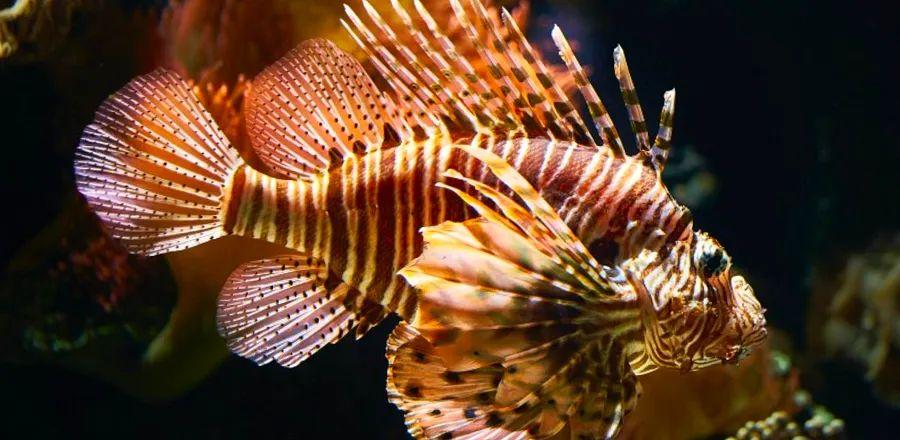A Surprisingly Delicious Solution to Protecting the Cayman Islands' Ecosystem

Fourteen years ago, on a peaceful day in the laid-back Cayman Islands, divers noticed a striped spine protruding from the reef. Earlier reports of a migrating underwater predator from the northeast had locals on alert, and now their concerns were confirmed: Lionfish had made their way to the islands.
Initially, only a few lionfish appeared in the region, characterized by their colorful bands of orange and white, growing up to 18 inches. Their appearance resembled a tiger more than a lion, but their numbers soon surged, leading to an environmental disaster. Local fish and crustaceans vanished, leaving the reefs barren. As this invasive species consumed the delicate ecosystem vital to both locals and visitors, both wildlife and humans faced the consequences.
This marked the beginning of a journey filled with innovation and determination, eventually giving rise to a new industry and a unique addition to the Cayman Islands' culinary offerings.
Lionfish: The Invasive Monarch of the Sea?
The exact way lionfish, native to the Indian and Pacific Oceans, made their way to the Atlantic remains a mystery. The most popular theory suggests human involvement, with aquarium owners releasing their pet lionfish into the waters off Miami. While the true cause of their invasion may never be confirmed, the destruction caused by these venomous and insatiable predators is undeniable.
Lionfish not only devour large quantities of sea life—including fish, fish eggs, crustaceans, and mollusks—but they also consume the algae that helps clean coral reefs, threatening massive reef die-offs. Without natural predators and with a rapid reproductive rate, laying up to 30,000 eggs every few days, their population continues to explode. Their venomous spines, capable of causing convulsions, numbness, and even death, also make them difficult and dangerous to catch.
Recognizing the need for action, the government acted quickly. Though spearfishing had previously been banned, the Department of Environment granted permission for licensed individuals to cull the lionfish, offering training in harpoon use. However, the fish's rapid breeding rate meant divers couldn’t keep up. Simply killing them seemed unsustainable, as argued by conservationist Jason Washington and chef Thomas Tennant, who came up with a more flavorful solution.
A New Wave of Change
Already skilled in preparing invasive species, chef Tennant had previously added the green iguana to local menus across the Caymans. Following the lionfish invasion, he introduced the fish to the menu at Michael’s Genuine after becoming head chef in 2010. Tennant went on to feature lionfish dishes at other restaurants he managed, such as the Brasserie on Grand Cayman and Fi’lia in the Bahamas. In 2018, he launched his own venture, Tomfoodery Kitchen, where lionfish is a regular menu highlight.
Although lionfish spines are venomous, their flesh is perfectly safe to eat. After trying the succulent, white meat—often described as a buttery mix of lobster and shrimp—he was eager to contribute to conservation efforts.
“Convincing people to eat lionfish wasn’t easy,” Tennant shared with Dinogo. “Many assumed they were too toxic to consume.”
However, after months of advocacy and with the increasing damage caused by the lionfish, more people began to embrace the idea. The destruction of reefs impacted both food sources and local businesses, including the tourism industry. As the issue escalated, Tennant's sustainable sea-to-table approach became increasingly attractive.
In 2010, Jason Washington and the Department of Environment organized the first official “Lionfish Tournament,” encouraging divers to capture as many lionfish as possible. These tournaments continue today, led by the Cayman United Lionfish League (C.U.L.L), which rewards divers for their catches. At the inaugural event, Tennant prepared a variety of dishes using the culled lionfish, including ceviche and sandwiches, which received rave reviews.
By 2022, all three of the Cayman Islands—Grand Cayman, Little Cayman, and Cayman Brac—were actively involved in lionfish culling. The process now includes research analysis of the fish before they are exported to local and international restaurants.
The Future of Lionfish
Lionfish have become a sought-after dish not only in the Cayman Islands but also throughout the Greater and Lesser Antilles and along Florida's coast, with prices reaching up to $30 per fish. It can be served in various ways—fried, steamed, grilled, or raw—and is featured in popular dishes like lionfish tacos, escovitch, and sushi. In addition to Tomfoodery Kitchen, another great spot to try lionfish is Tukka, which has two locations on Grand Cayman.
Tennant particularly enjoys preparing lionfish for ceviche and uses it to put a creative spin on the classic Jamaican dish, ackee and saltfish. “I’m also experimenting with a savory doughnut using salted lionfish, local peppers, scallions, and brown butter,” he shared.
Lionfish have gained such popularity in the Caribbean that demand has outpaced local supply, forcing some restaurants to import them from other regions. According to the Department of Environment, when culling efforts began, divers could collect up to 200 lionfish in a single two-tank dive. Now, divers are lucky to find just 10. This raises the question: what will happen to the Cayman Islands’ cuisine once the lionfish invasion is controlled?
The Department of Environment is monitoring the decline in lionfish numbers. Whether this reduction is a lasting result of ongoing local culling or just a temporary dip, it’s a promising sign for the Cayman Islands.
Thomas Tennant explains, “The ultimate goal is to remove these fish from ecosystems where they don’t belong.” Turning them into a delicious food is an added benefit during the culling process. “It’s not essential as a food source, but when people eat lionfish, they’re also helping other species to thrive.”

1

2

3

4

5
Evaluation :
5/5